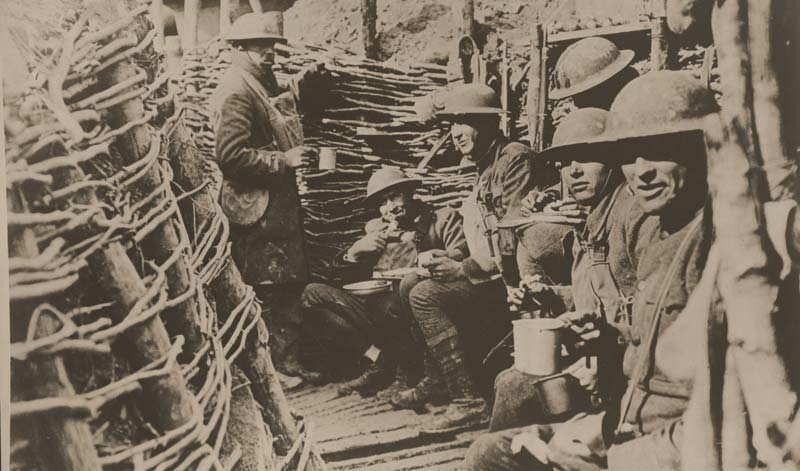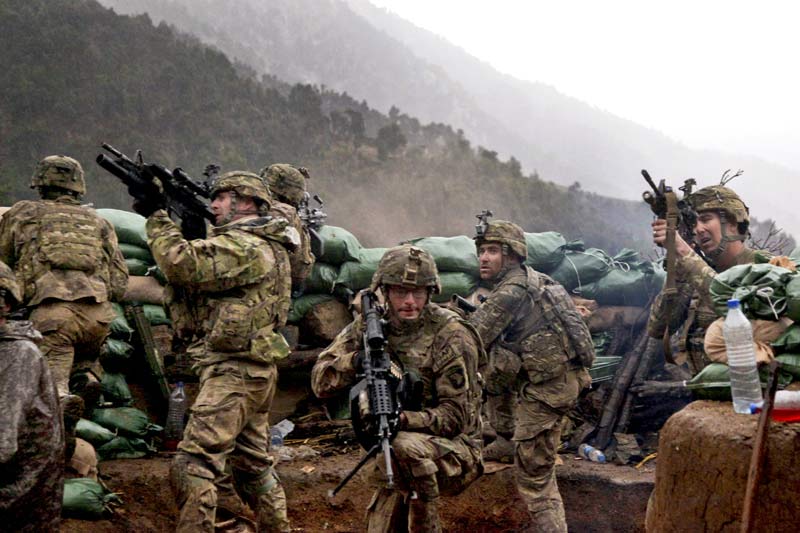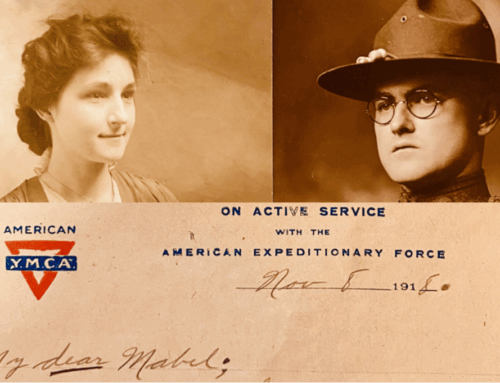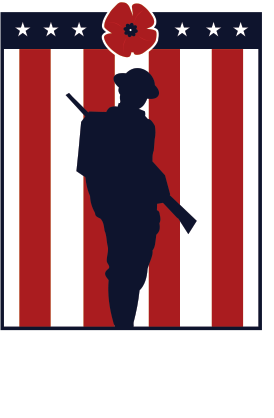The U.S. Army – Its History of Fighting On Foreign Soil
Published: 22 October 2025
By Peter Suciu
via the Safariland website

US-Army-WWI-Trenches
U.S. Army soldiers on the Western Front in World War I. By the time the guns fell silent on November 11, 1918, the AEF had evolved into a modern, combat-hardened unit recognized as one of the best in the world.
The “See the World” slogan has been a recurring theme in United States Navy recruitment efforts for decades, while the Marines’ Hymn highlights the United States Marine Corps’ foreign deployments in wartime. Yet, when the phrase “boots on the ground” comes to mind today, it reminds us that the United States Army has sent its military personnel to distant lands to protect American interests and fight the foes of freedom and democracy.
For much of its 250-year existence, the United States Army didn’t actually fight wars abroad, but it has deployed soldiers beyond the nation’s borders since its origins.
Today, approximately 166,000 active-duty military personnel are stationed overseas at nearly 750 bases around the world. The bulk of those forces are from the United States Army, which currently has deployed soldiers to every continent, even Antarctica, where they mostly fight the cold while supporting the U.S. Antarctic Program.
Origins of the U.S. Army as a Global Fighting Force
This year famously marks the founding of the Army on June 14, 1775, which occurred more than a year before the signing of the Declaration of Independence.
That same month, the newly formed “Continental Army,” the precursor to the modern service, also launched its first “foreign action,” the invasion of Quebec. The objective was to seize the Province of Quebec, now part of modern-day Canada, and convince the French-speaking Canadiens to join the revolution. Though it ended in a British Victory, the campaign highlighted the Continental Army’s early ambition to expand the war effort beyond the Thirteen Colonies.
The Marines’ Hymn may highlight the Corps’ role in the Mexican-American War (April 1846 – February 1848) with its opening line “From the Halls of Montezuma,” yet, the bulk of the American fighting force in that conflict was primarily made up of U.S. Army soldiers. To mount the attack on Mexico, the Army was greatly expanded from just over 7,200 soldiers to 35,000, while an additional 73,000 volunteers further filled the ranks alongside Sailors and Marines. It marked the largest deployment of U.S. military personnel on foreign soil for half a century.
Just 13 years later, the country was almost torn apart by the American Civil War. The U.S. Army swelled in size to save the Union, reaching more than one million men by the end of the conflict. Yet, by 1874, there were just 25,000 men in its ranks. Those professional soldiers served not in a distant land but still one that was alien to them, namely the untamed West.
The Frontier Army helped facilitate the country’s westward expansion, building infrastructure, providing security, and maintaining order until civil governments could be established. It likely helped prepare the U.S. Army for future overseas deployments.

The Frontier Army Museum at Fort Leavenworth, Kansas, notes the changing technology – horses were still used alongside early aircraft to patrol the frontier.(Photo by the author)
Ready to Fight in Distant Lands
In 1898, when the United States found itself at war with Spain, it emerged onto the world stage, but was far from a global power in any sense of the world. At the start of the Spanish-American War, the U.S. Army had even fewer than 25,000 soldiers in its ranks. President William McKinley then issued calls for volunteers, hoping the Army would see its ranks doubled. Instead, more than 200,000 volunteered, while state National Guard units were also mobilized.
The U.S. Army may have fought in Canada and Mexico and helped tame the frontier, but it was set to join the U.S. Marine Corps and U.S. Navy in fighting a foreign war. Those branches had seen overseas action in the Barbary Wars (1801-1805) and the Sumatra Expedition of 1832, but it was finally the Army’s turn.
⇒ Read the entire article on the Safariland, website here:
External Web Site Notice: This page contains information directly presented from an external source. The terms and conditions of this page may not be the same as those of this website. Click here to read the full disclaimer notice for external web sites. Thank you.





